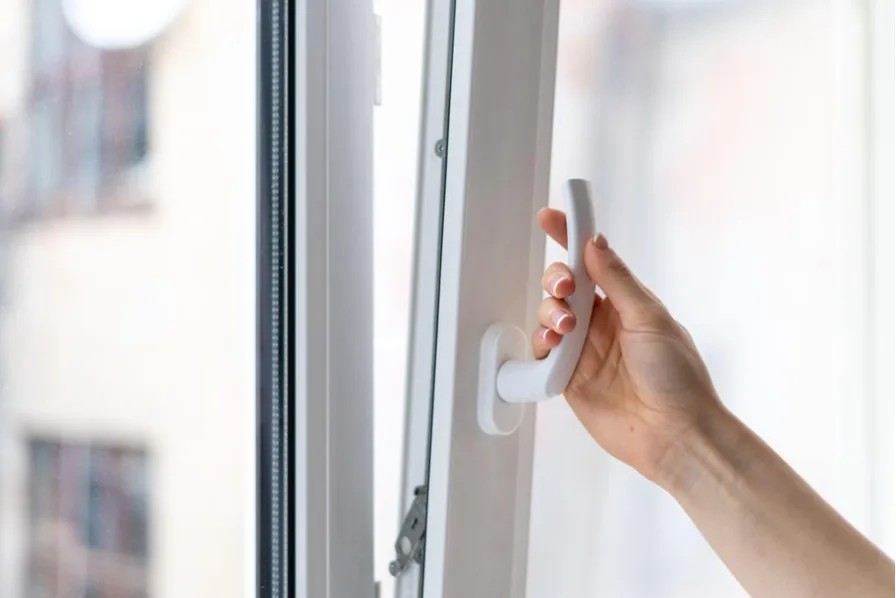In an era where climate change is no longer a distant threat but a pressing reality, every aspect of our homes can contribute to a greener future. Sustainable windows (fenster) are more than just a trendy upgrade—they’re a smart investment in energy efficiency, cost savings, and environmental stewardship. By choosing eco-friendly window options, homeowners can significantly reduce their carbon footprint while enhancing comfort and property value. This comprehensive guide explores the best sustainable windows available today, from innovative materials to cutting-edge technologies, helping you make informed decisions that align with your eco-conscious lifestyle.
Whether you’re building a new home or retrofitting an existing one, understanding how fenster impact energy consumption is key. Traditional windows often leak heat in winter and allow excess warmth in summer, forcing HVAC systems to work overtime and spiking energy bills. Sustainable alternatives flip the script, offering superior insulation and natural light to minimize reliance on artificial heating and cooling. Ready to dive into the world of green glazing? Let’s break it down.
Why Sustainable Windows Matter for Your Carbon Footprint
Windows play a pivotal role in a home’s energy profile. According to the U.S. Department of Energy, windows account for about 30% of residential heating and cooling energy use. Poorly designed or aged windows contribute to this inefficiency, releasing unnecessary greenhouse gases into the atmosphere. Opting for sustainable windows isn’t just about going green—it’s about slashing your utility bills by up to 20-30% and lowering your overall emissions.
The environmental benefits extend beyond energy savings. Eco-friendly windows reduce the demand for fossil fuels, preserve natural resources through recyclable materials, and support biodiversity by minimizing habitat disruption from raw material extraction. Plus, in regions with strict building codes like California’s Title 24, sustainable windows are often a requirement for new constructions, ensuring compliance while boosting sustainability.
Imagine transforming your home into a low-emission sanctuary. With the right choices, you can cut your household’s carbon footprint by hundreds of pounds annually—equivalent to planting dozens of trees each year. As global awareness grows, so does the market for these innovations, making them more accessible and affordable than ever.
Eco-Friendly Materials for Sustainable Windows
The foundation of any sustainable window lies in its materials. Traditional vinyl or aluminum frames often rely on petroleum-based plastics or energy-intensive mining, but greener alternatives prioritize renewability and recyclability. Here’s a closer look at top eco-friendly options:
Recycled and Low-Impact Frames
Fiberglass frames stand out for their durability and sustainability. Made from up to 40% recycled glass, they offer exceptional strength without the thermal bridging issues of metal frames. Unlike wood, which requires deforestation, fiberglass is rot-resistant and requires no chemical treatments, extending its lifespan to 50+ years.
Wood frames, when sourced responsibly, are another winner. Look for FSC-certified (Forest Stewardship Council) options from sustainably managed forests. These frames provide natural insulation and a warm aesthetic, but pair them with low-VOC finishes to avoid off-gassing harmful chemicals.
For the ultimate in recyclability, aluminum frames with recycled content (up to 95%) are gaining traction. Modern designs incorporate thermal breaks to enhance energy efficiency, making them ideal for urban renovations.
Energy-Efficient Glass Innovations
Glass technology has evolved dramatically. Double- or triple-pane windows filled with argon or krypton gas create a barrier against heat transfer, improving insulation by 50% over single-pane versions. Low-emissivity (Low-E) coatings reflect infrared light while allowing visible light through, keeping interiors cooler in summer and warmer in winter.
Advanced options like vacuum-insulated glass (VIG) panels are ultra-thin yet outperform traditional setups, perfect for historic homes where space is limited. These innovations use less material overall, reducing the embodied carbon from manufacturing.
By selecting these materials, you’re not just upgrading your view—you’re investing in windows that last longer, waste less, and perform better under real-world conditions.
Energy-Efficient Technologies in Modern Windows
Sustainability goes hand-in-hand with smart tech. Today’s eco-friendly windows incorporate features that dynamically respond to environmental changes, optimizing performance without manual intervention.
Smart and Adaptive Glazing
Electrochromic glass, often called “smart glass,” tints automatically in response to sunlight, blocking up to 90% of heat gain while maintaining clarity. Brands like View and SageGlass use low-voltage electricity to achieve this, powered by solar panels for net-zero operation. This tech can reduce cooling needs by 20%, directly cutting CO2 emissions from air conditioning.
Passive solar designs, like those with phase-change materials embedded in frames, absorb and release heat gradually, stabilizing indoor temperatures naturally. These are especially effective in variable climates, minimizing the carbon footprint of seasonal energy spikes.
Ventilation and Airflow Enhancements
Sustainable windows aren’t just about sealing in comfort—they also promote healthy airflow. Operable casement or awning windows with weatherstripping allow controlled ventilation, reducing reliance on mechanical systems. Integrated insect screens made from recycled polyester keep bugs out without synthetic pesticides.
For airtight performance, look for windows certified by the National Fenestration Rating Council (NFRC). High U-factor (under 0.30) and Solar Heat Gain Coefficient (SHGC) ratings ensure they meet ENERGY STAR standards, qualifying for rebates that further lower your environmental and financial costs.
These technologies transform passive windows into active allies in your quest for a carbon-neutral home.
Top Sustainable Window Brands and Products
Navigating the market? We’ve curated a list of standout brands leading the charge in eco-friendly innovation. Each offers unique features tailored to different needs and budgets.
| Brand | Key Features | Eco-Cred | Price Range (per window) |
| Andersen | FSC-certified wood with Fibrex composite (40% recycled content) | Low-VOC, recyclable | $400–$1,200 |
| Pella | Triple-pane with SmartFrame fiberglass; argon-filled | ENERGY STAR certified, 25% recycled materials | $300–$900 |
| Marvin | Signature Ultimate line with Low-E4 glass and bamboo interiors | FSC wood, carbon-neutral manufacturing | $500–$1,500 |
| Milgard | SunCoat Low-E glass in vinyl or fiberglass; made in USA | Up to 60% recycled content, lifetime warranty | $250–$800 |
| Loewen | Custom hardwood with vacuum glazing options | Sustainably sourced, zero-waste production | $600–$2,000 |
Andersen’s A-Series, for instance, combines classic style with modern efficiency, ideal for coastal homes prone to humidity. Pella’s Impervia line excels in harsh weather, using fade-resistant, recyclable fiberglass that withstands UV exposure without degrading.
When shopping, prioritize third-party certifications like Cradle to Cradle or GreenGuard to verify true sustainability claims. Many of these brands partner with offset programs, planting trees for every window sold.
Installation Tips for Maximum Eco-Benefits
Even the greenest windows underperform if installed poorly. Proper setup seals gaps that could leak 10-15% of your home’s conditioned air. Hire certified installers familiar with green building practices, such as those trained by the Building Performance Institute (BPI).
Start with a home energy audit to identify weak spots. Retrofit existing frames with insert replacements to avoid full tear-outs, saving on waste. Use low-expansion foam sealants made from plant-based foams instead of petroleum-derived ones.
Post-installation, maintain your investment with annual cleanings using eco-friendly solutions—no harsh chemicals needed. Regular checks for seals ensure longevity, keeping your carbon savings intact for decades.
The Long-Term Impact: Savings and Sustainability
Switching to sustainable windows yields immediate and lasting rewards. Homeowners report average annual energy savings of $300–$500, with payback periods as short as 5-7 years. Over a window’s 20-30 year lifespan, that’s thousands in pocket and tons of CO2 averted.
Broader impacts include increased home resale value—green features can boost prices by 5-10%—and community benefits like reduced grid strain during peak hours. As incentives like the Inflation Reduction Act’s 30% tax credit for energy-efficient upgrades roll out, now’s the perfect time to act.
Conclusion: Open the Door to a Greener Tomorrow
Sustainable windows are a gateway to a lower-carbon lifestyle, blending aesthetics, efficiency, and ethics seamlessly. From recycled fiberglass frames to smart tinting glass, the options empower you to make a tangible difference without sacrificing style. By prioritizing eco-friendly choices, you’re not just upgrading your home—you’re contributing to a healthier planet for generations to come.
Ready to reduce your carbon footprint? Consult a local expert, explore rebates, and start envisioning clearer skies through your new sustainable windows. The view from a greener home has never looked better.


